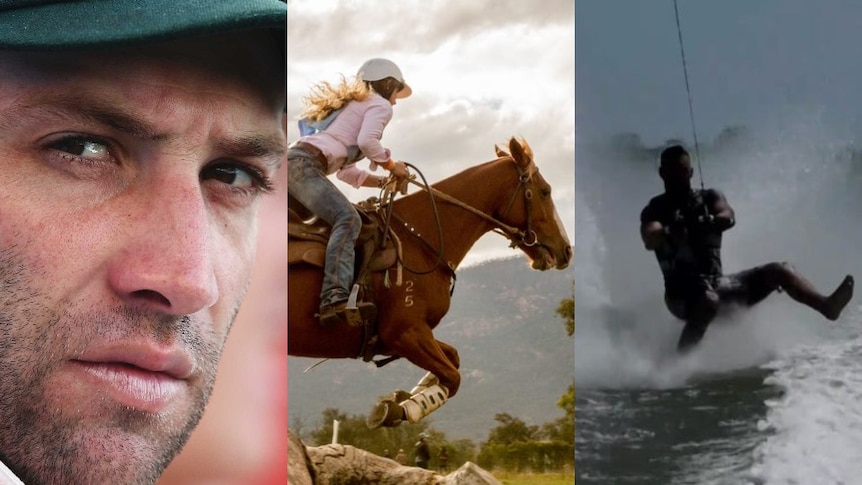In the corner of sports lawyer Annette Greenhow's desk is a folder labeled “Death.”
It's much thicker than she ever wanted or imagined.
Dr. Greenhow is an Assistant Professor at Bond University, specializing in the intersection of ethics and supervision in sport.
This is a series of works in which she scrutinizes the details of countless tragic sporting deaths, from the death of cricketer Philip Hughes to the recent deaths of AFL figures Shane Tuck and Danny Frawley. be.
She said any death during or as a result of sport is difficult to swallow.
But it was by no means a new phenomenon.
“You only have to look back to ancient times to see that there has always been a fascination with danger in sports,” she says.
“But what has changed over the years is the extent to which we accept and tolerate those risks.”
On average, at least one person dies every week in Australia while playing sport or similar recreational activities.
Last week Luke Wentworth passed away during the Murray River Southern 80 ski event.
Days later, a rugby league club in New South Wales was rocked by a second fatality in less than a year after a player died during training.
Australia's deadliest sport
Lauren Fortington led a team of researchers at Edith Cowan University to compile the first national analysis of fatal injuries that occur during sports and active recreation.
Her research has revealed the “shocking” fact that at least one person in Australia dies in sport every week.
“What was very surprising to me was that even when we excluded transportation, drownings, and other duplicate cases, there was still at least one injury death per week,” Dr. Fortington said.
Her research focused on annual reports of sports-related or sports-related deaths from July 1, 2000 to December 31, 2019.
A total of 1,192 deaths were tested, resulting in an average of 63 deaths per year.
84.4% of the deaths were male.
The highest rate of fatalities was 26.9% in motorsports such as motorcycle racing.
Non-motorsports such as cycling accounted for a further 16.2%.
Blunt trauma was the most common cause of death at 85.4%.
The number of deaths during team sports was much lower.
During the nearly 20-year research period, eight participants participated in rugby league and seven participants in Australian rules football.
Dr. Fortington said the goal of the study was not to scare people away from sports, but to discover and ultimately eliminate the deadly risks associated with healthy sporting activities.
“It's important that we continue to be active and safe in Australia and encourage that,” she said.
What about injuries?
The number of Australians hospitalized with sports injuries has returned to pre-pandemic levels.
Sports-related hospitalizations totaled 66,500 in 2020-2021, an increase of 14,200 compared to the previous year, which was affected by the pandemic.
Cycling caused the most sports injuries during the year at 9,800, an increase of 35 per week compared to the previous year.
Considering participation rates, competitive rugby and wheeled motorsports such as motorcycling and car racing have the highest incidence of injuries requiring hospitalization, each with 1,200 injuries hospitalized per 100,000 participants aged 15 and over. did.
More than half of hospitalizations due to sports injuries involved fractures, most commonly arm and shoulder fractures.
Concussion hospitalizations for all sports injuries were less than 5%.
However, Dr. Fortington said a significant portion of the information is still missing.
Because total participation figures for the sport are not available, it is impossible to determine what percentage of athletes are injured, whether or not they are fatally injured, she said.
Her call for more information received support from the Senate Inquiry into Head Injuries in Sport last year.
“Simply if we don't know what's going on, we can't prevent it,” she says.
A spokesperson for the Australian Institute of Health and Welfare said it was “neither useful nor appropriate” to single out certain sports as more dangerous than others.
“Similar injuries, such as head trauma, can have a variety of causes. Sports is one activity that can cause this injury, but the main causes are falls and transportation,” the spokesperson said. said.
Dr Fortington said it was the responsibility of sports governing bodies to ensure appropriate rules were in place to reduce the likelihood of serious injury or death.
“We entrust them with [administrators]as members of society, and give them a social license to operate if you like,” she said.
Even if it's wrong, it's right
Annette Greenhow knows all too well the impact of death in sport.
“The damage done to the community is enormous,” she said.
“I am very interested in promoting safe sport.
“I'm not anti-sport…but if we feel like we're not doing enough as a society and there's a recognition that it's too dangerous, then we're going to do these very important things that we love. I will withdraw from such activities.”
She said it was important to find a balance between control and competition.
“We need to carefully monitor costs and benefits,” she says.
Thought-provoking and thought-provoking sports content. Newsletter sent every Friday.


